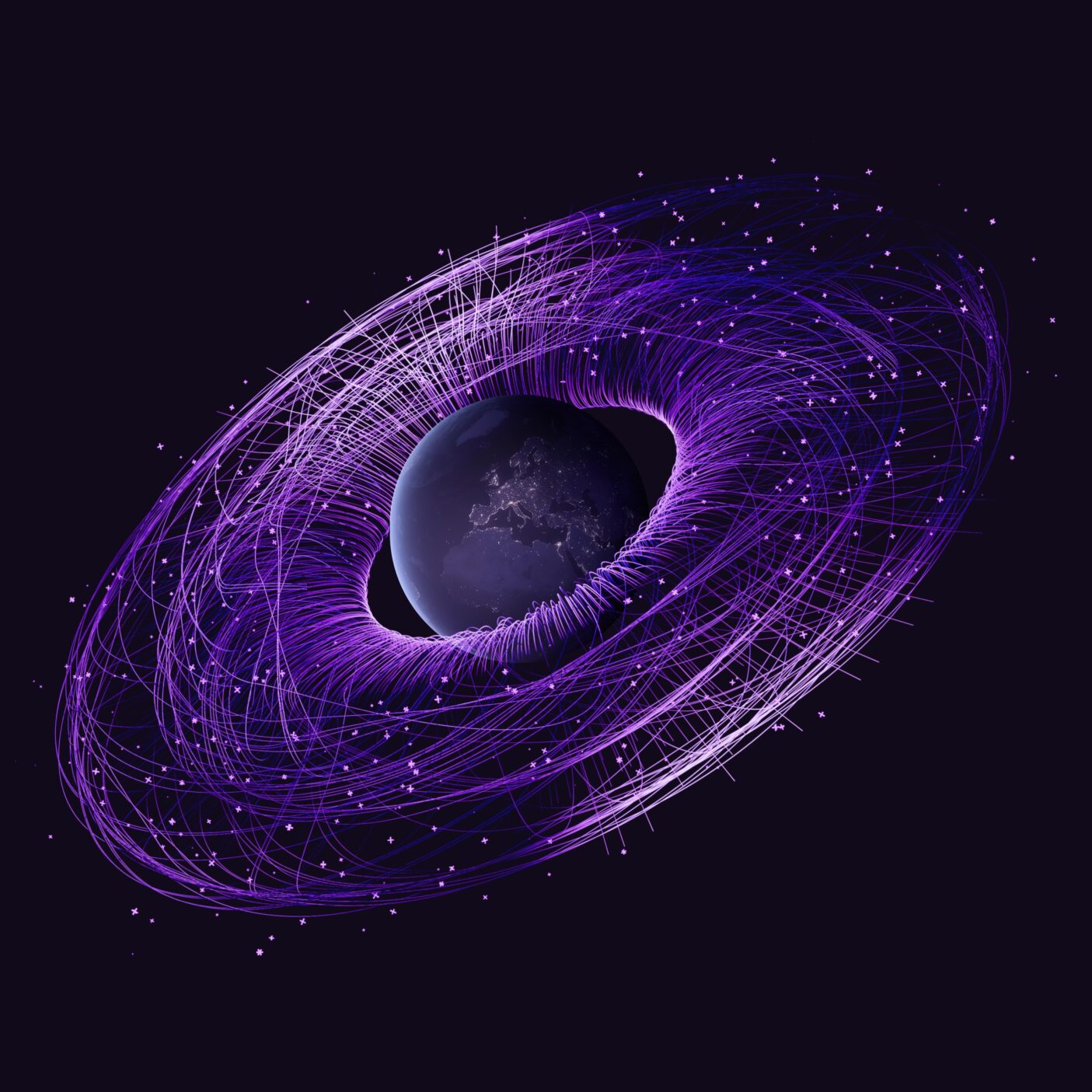-
Optical orbital tracking, even in daylight
Our proprietary global network of optical telescopes covers all orbits from LEO to GEO and Cislunar. Short-wave Infrared (SWIR) technology enables continuous surveillance, day and night.
-
Data delivered in a minute
Our global network of telescopes can locate and image objects rapidly. Our Cortex platform typically delivers your data to you in one minute.
-
Cutting edge AI built on powerful hardware
Our system delivers unparalleled sensitivity to detect, characterise, and predict movements of faint objects thanks to 70cm-class telescopes and advanced cameras powered by our expertise in machine learning and AI-driven algorithms.
Geostationary Orbit
GEO Tasking:
Persistent Eyes on the
Highest Orbits
Spaceflux delivers fully redundant coverage in geostationary orbit (GEO). Every Resident Space Object (RSO) is persistently tracked several times a day from multiple sites around the globe, ensuring no single-point-of-failure and continuous situational awareness.
Leveraging advanced SWIR-enabled optical sensors and AI-driven tasking, we precisely detect, track, and characterise objects as small as 10 cm, delivering intelligence you can act on immediately.
Low Earth Orbit
LEO Tracking: Minute-Level Responsiveness, Centimetre-scale Insights
In the fast-moving realm of low Earth orbit (LEO), agility and precision define mission success. Spaceflux is building Europe’s leading sovereign optical LEO surveillance capability – precise, responsive, and mission-ready.
Our LEO tracking capability delivers actionable intelligence on objects as small as 2.5 cm with sub-arcsecond accuracy. Our Cortex platform ensures data is delivered rapidly, supporting responsive alerts, and fleet-wide anomaly detection enabling instant alerts, rapid anomaly detection, and proactive asset protection.
How we do it
Our Agile Optical Sensor Network
Our global network of proprietary observatories is strategically positioned across five continents – and we’re growing rapidly. Our telescopes enable real-time tasking, multi-angle tracking, and continuous custody from LEO to GEO. With 70cm optics, SWIR cameras, and edge-processed AI, we ensure insights are delivered in seconds. By 2026, our network will span 25 sites, delivering sovereign-grade visibility to customers worldwide. Our systems are engineered for precision, autonomy, and security.
-
Built for Sovereignty
Infrastructure that supports national operational control, long-term reliability, and strategic mission assurance -
Instant Access via Cortex
Cloud-native, secure platform for live tasking, instant alerts, and real-time visualisation . -
AI-Driven Analytics
Track characterisation, predictive modelling, and behavioural insights -
Secure by Design
Encryption, rigorous access control, and tamper-resistance built into every layer

Why observe and study space debris? Interview with Mentore Giorgetti from Spaceflux
Note for the reader: This article has been translated from Italian into English. Here is the link to the original article published on June 19, 2025 by Astrospace and written by Stefano Piccin. Distribution of space debris. The red line represents the geostationary orbit. Each white dot shows the actual position (not the actual size)…
Launching Our New Website: Reflecting Growth at Spaceflux
We are introducing the new, redesigned spaceflux.io. The new site is a reflection of how Spaceflux is growing and evolving to better serve our customers and partners. As the company has matured, we felt it was time for our online presence to grow with us. The new site, created in collaboration with the renowned design…
Advancing UK’s Planetary Defence: Spaceflux Network Joins UKSA’s Asteroid Monitoring Efforts
The vastness of space holds countless wonders—and potential hazards. With over 31,000 Near-Earth Objects (NEOs) currently catalogued and hundreds more discovered each month, the need for robust monitoring systems has never been more critical. Today, we’re proud to announce that Spaceflux’s global observation network is now part of the UK Space Agency’s (UKSA) contribution to the International Asteroid Warning Network (IAWN).
Newsletter signup
Stay informed about the latest advancements in optical space tracking, technology releases from Spaceflux Labs, and early access to new capabilities.
